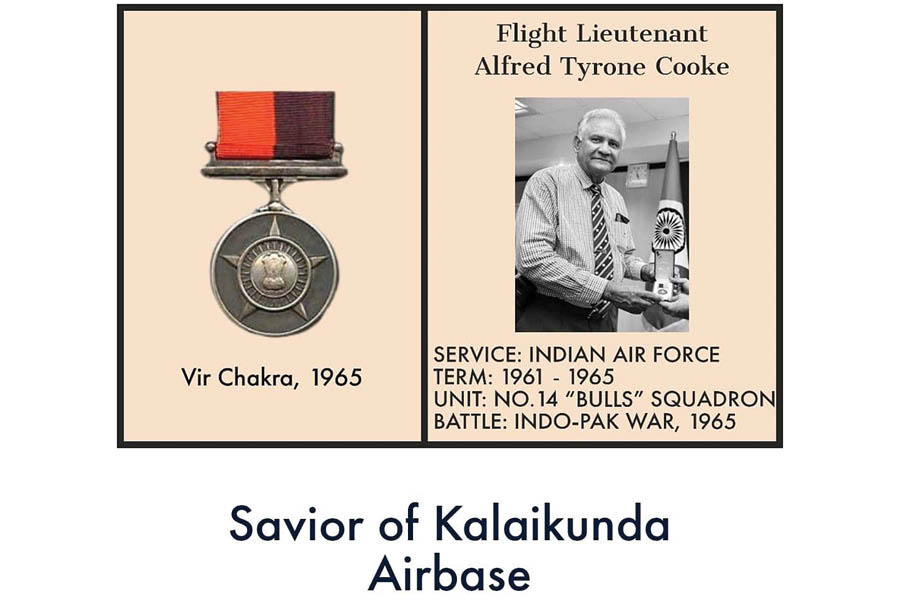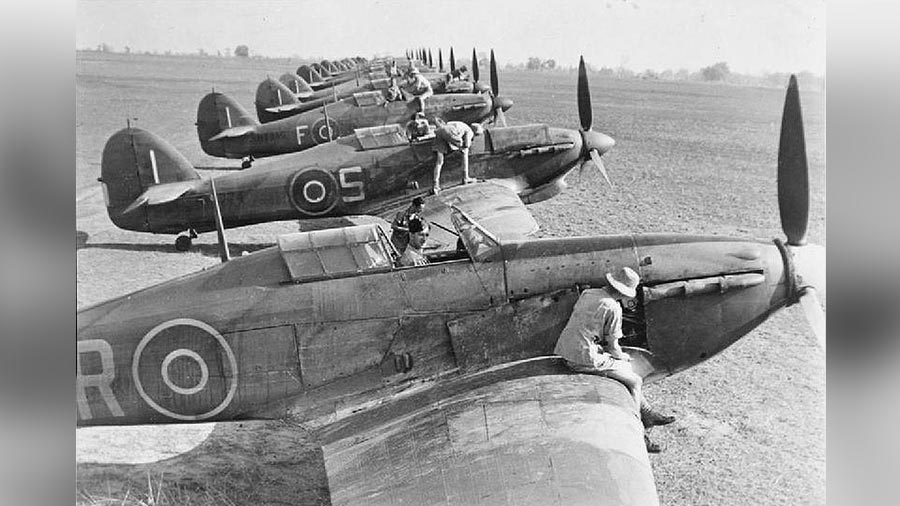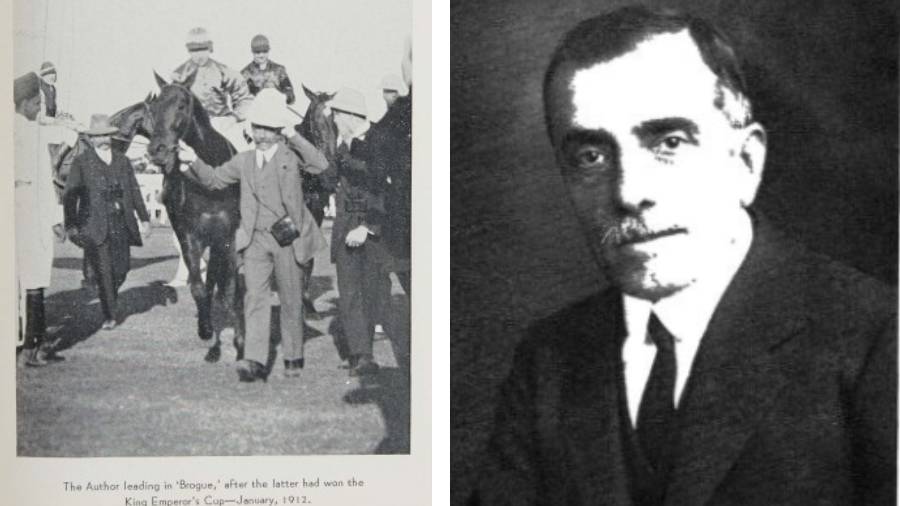The India-Pakistan war of 1965 was largely fought on the western front – there was no ground action on the eastern border. Probably, as a consequence, one of the greatest displays of air combat that took place on the eastern front has remained somewhat obscure. This is his story – the story of Flight Lieutenant Alfred Tyrone Cooke.
Situated near Kharagpur, Kalaikunda was a WWII-era air station. On September 6, 1965, in what was an embarrassing intelligence failure, the eastern command of the Indian Air Force (IAF) ended up bombing unused military air bases at Kurmitola and Lalmunir Hat as well as the civilian air base in Chittagong while ignoring the only active Pakistan Air Force (PAF) base in East Pakistan at Tezgaon near Dacca. Retaliation came swiftly.
On the morning of September 7, 1965, Kalaikunda IAF base came under attack from PAF Sabre F-86 jets. Six Sabres wreaked havoc and by the time the Pakistani jets flew back to Tezgaon, four IAF Vampires and two Canberras were damaged permanently. There was also significant damage to the airfield. The mood was one of depression. But there was hardly any respite for Kalaikunda. A four aircraft formation of PAF Sabres had executed a brilliant tactical plan – to evade radar, they had flown south towards the sea and then near Port Canning, taken a northwards turn, set for Kalaikunda. It was when the Sabres were over Canning that the radar officer at Kalaikunda caught a momentary blip and immediately informed Wing Commander ‘Dicky’ Law – the OC Flying at Kalaikunda, of another impending raid.
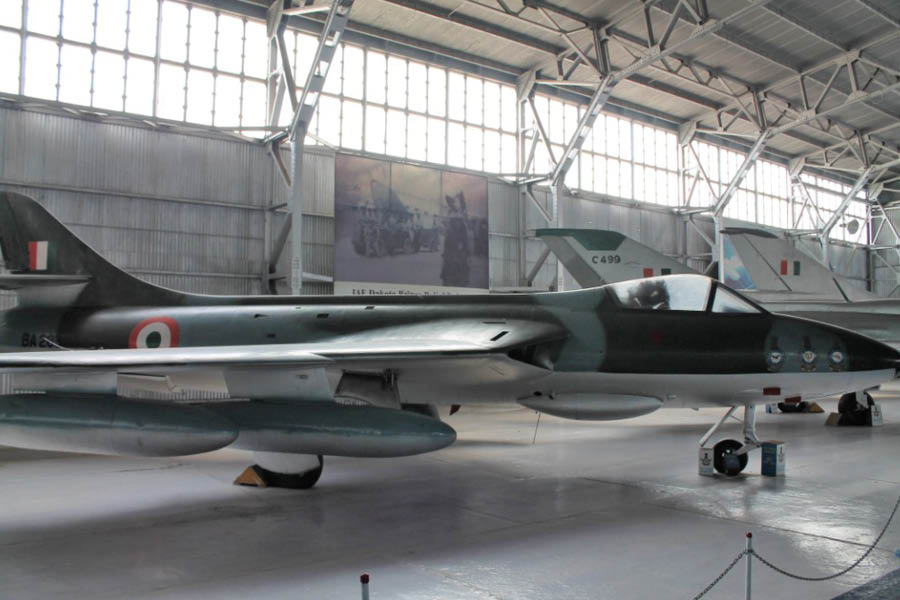
An Indian Air Force Hawker Hunter
Luckily for Law, a two-aircraft formation of Hunters from Dumdum – piloted by Flight Lieutenant Alfred T. Cooke and Flying Officer SC Mamgain of IAF 14 Squadron – was in the air on combat air patrol duty north of Kalaikunda, monitoring the Barrackpore-Dumdum sector. Law immediately asked the Kalaikunda radar controller to direct Cooke and Mamgain towards the base. The two pilots had endured a frustrating day till then. Twice they had scrambled on news of Pakistani aircraft nearing Indian airspace but had failed to make visual contact with the enemy both times. This time, that was to change. They now set course for Kalaikunda – 120 nautical miles away.
When they were about 10km short of Kalaikunda, Cooke spotted the PAF Sabres. Three of them were in attack mode from the western side of the base – targeting the runway while another kept watch from top on the eastern side. Breaking protocol*, Cooke informed his wingman that he was going for the three Sabres on the western side and asked Mamgain to handle the one(s) on the other side. What followed next was some of the most audacious and breathtaking flying ever witnessed.
Cooke settled behind the first Sabre and gave it a mad chase. He flew so dangerously low that his plane clipped top of the trees. The Sabre, piloted by Flight Lieutenant Afzal Khan, did its best to evade the Hunter but Cooke was unrelenting. The superior acceleration of his aircraft eventually paid dividends as fire from the Hunter’s 30mm guns found their mark, breaking up the Sabre in mid-air and killing Flight Lieutenant Khan.
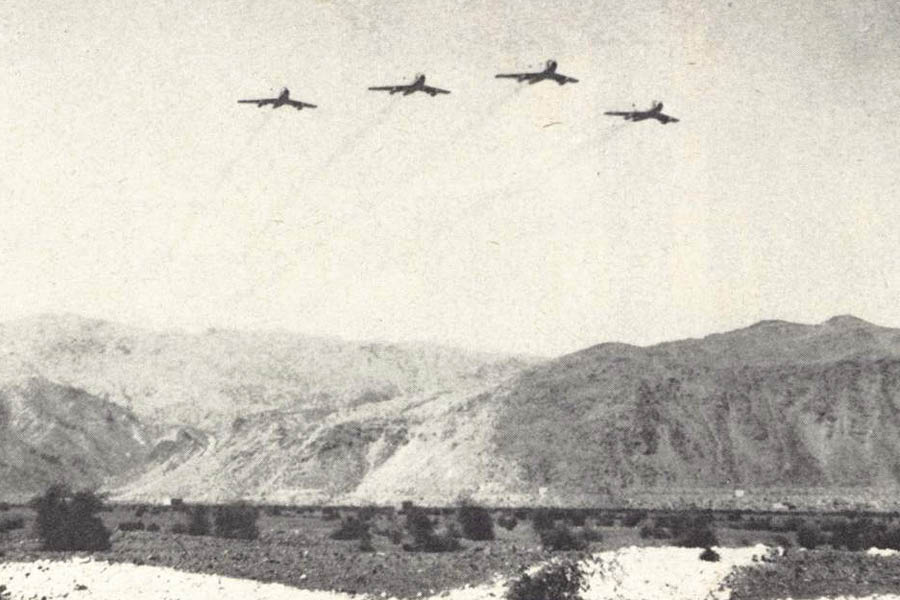
A fleet of F-86 Sabres during an air raid during the 1965 war
Without wasting anytime, Cooke got behind a second Sabre that was trying to get him. Once again manoeuvring his aircraft audaciously, making violent scissoring moves, Cooke got the better of his adversary and nailed the Sabre with gunfire. This aircraft managed to flow back to Dacca but was ‘written off due to lack of spares’ as per PAF official records. Cooke had little time to breathe – another Sabre was now on his tail. Once again, Cooke managed to turn a disadvantageous position into his favour and suddenly the predator became prey. Cooke chased the Sabre which went into a vertical climb and then did a steep dive in order to evade. But Cooke did not flinch, following suit and firing incessantly. Nearing dangerously close to ground, the Sabre pulled off and fled away.
So obsessed was Cooke with finding his target that he suddenly realised he was heading for a dive straight into the ground. He managed to pull out at the proverbial last minute. But the battle was far from over for Cooke. He now spotted the last Sabre positioned behind Mamgain. He immediately warned his wingman and took position behind the Sabre. The Pakistani pilot was rattled and started making elaborate acrobatic moves to evade Cooke. The latter twice fired at his target – only to realise that he was out of ammunition. Even then, Cooke chased the Sabre right up to the East Pakistan border before turning back.
Finally, Flight Lieutenant Cooke had the leisure to review his position. The findings provided little joy: he was dangerously low on fuel and had lost his air speed indicator. He asked the Kalaikunda radar to provide him a Hunter escort from Dumdum to shepherd him in but the radar controller was unable to establish contact with the detachment at Dumdum.
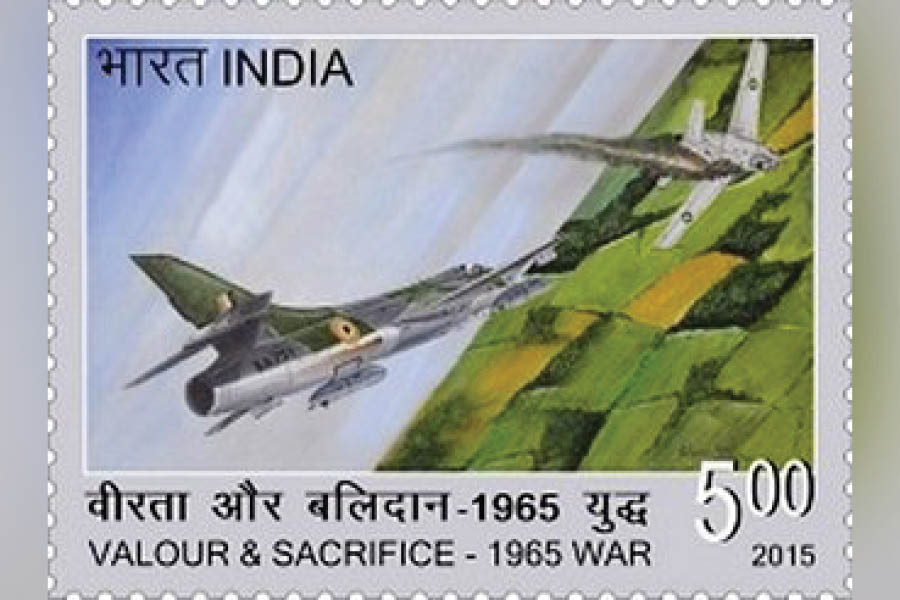
A postage stamp of India showing the IAF in 1965
Cooke now switched to civilian frequency and asked Dumdum ATC for emergency landing. He was informed that a Pan Am Boeing 707 was on the runway and permission could not be given. Cooke refused to obey and informed the ATC he was making an emergency landing. He managed to land his stricken aircraft safely – while taxiing to the hangar, his engine died 600 yards short of the parking bay.
A visual scan of his Hunter revealed missing drop tanks, blackened gun ports and branches and leaves stuck on the left wingtip that was damaged as well. Cooke had literally pulled off a miracle! Magnitude of his exploits would become clear much later when in its official history of the 1965 war, PAF recorded that on the second raid of Kalaikunda, its Sabres were attacked by nine Hunters!
Flight Lieutenant Cooke was awarded the Vir Chakra for his audacious bravery. He left the IAF in 1967 and settled in Australia.
*Normally, the protocol would have been for the wingman to remain close to his formation leader
